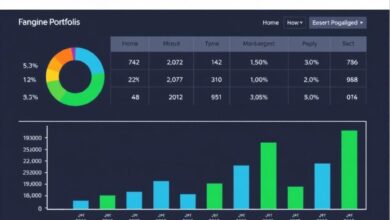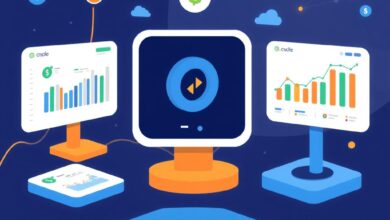How to invest if you’re self-employed or a freelancer

Establishing a robust personal finance framework is key. Allocate at least 20% of your monthly income to a dedicated savings account. This should be untouchable except for emergencies or significant opportunities. Automating this transfer can simplify the process and ensure consistency, allowing you to build a financial cushion without conscious effort.
Automation is your ally in managing finances effectively. Set up recurring payments for bills and subscriptions, which minimizes late fees and maximizes clarity on cash flow. Utilize budgeting tools that sync with your bank accounts, providing real-time insights into spending patterns. This allows you to adjust habits proactively rather than reactively.
For those who often juggle multiple projects, creating a separate account exclusively for taxes can mitigate end-of-year surprises. Aim to deposit a percentage of each payment received into this fund; 30% is generally advisable. This practice not only alleviates stress but also ensures compliance with tax obligations.
Savings should not stagnate; consider diversifying through low-cost index funds or high-yield savings accounts, which offer better returns compared to traditional options. Research shows that even modest investments can yield substantial benefits over time due to compound interest, reinforcing the importance of starting early.
Incorporate these principles into your financial routine, and watch as your economic stability flourishes amidst the unpredictability of independent work.
Understanding Your Cash Flow
Implement a robust cash flow management system using automation tools. This will help track income and expenses in real-time, allowing for accurate forecasting of financial health.
Establish a budget that reflects your actual earnings and expenditures. Categorize your spending to identify areas where savings can be maximized without sacrificing quality.
Utilize software solutions designed for personal finance. Many of these applications offer features like expense tracking, invoice management, and reporting, which can simplify your financial oversight.
Maintain an emergency fund that covers at least three to six months’ worth of living expenses. This cushion provides peace of mind during slower periods or unexpected downturns in revenue.
Regularly review and adjust your pricing strategy based on market demand and service value. Staying competitive while ensuring profitability is key to maintaining positive cash flow.
Incorporate savings into your monthly financial plan. Allocate a specific percentage of your income towards savings before addressing other expenses to build wealth over time.
Create multiple income streams to reduce reliance on a single source. Diversifying services or products can stabilize cash flow fluctuations and enhance overall financial security.
Analyze trends in your cash flow regularly. Understanding seasonal variations or cyclical patterns allows for better planning and adjustment of investments or expenditures accordingly.
Consider setting up automatic transfers to savings accounts right after receiving payments. This “pay yourself first” approach ensures consistent growth in reserves without requiring active decision-making each month.
Lastly, educate yourself continuously about personal finance principles. The more informed you are, the better equipped you’ll be to make sound decisions regarding cash management and future opportunities.
Diversifying Income Streams
Consider creating multiple revenue sources to mitigate the risks associated with irregular income. This can enhance your savings and provide stability in personal finance management.
Explore passive income opportunities like rental properties, affiliate marketing, or dividend stocks. These avenues allow you to earn money without constant active involvement.
Engage in freelance projects that align with your skills while also branching out into new areas. For instance, if you’re a graphic designer, consider offering online courses or writing e-books related to design principles. This not only diversifies your offerings but also builds your brand.
Another effective approach is to invest time in digital products, such as templates or software tools. Once created, these items can generate ongoing sales without significant additional effort.
A balanced mix of active and passive income streams can significantly reduce financial anxiety during lean periods while allowing for greater savings potential over time. Regularly assess the performance of each source to optimize your efforts and adjust strategies accordingly.
Investment Options Overview
Consider allocating funds into high-yield savings accounts to manage irregular income. This approach provides liquidity while earning interest, ensuring your savings grow without sacrificing access to cash.
Another viable choice is low-cost index funds. They offer diversification and typically yield better returns than traditional savings accounts over the long term, making them suitable for fluctuating earnings.
Robo-advisors can automate investment management, allowing you to set risk preferences and goals. This hands-off method suits those who prefer simplicity and efficiency, especially with limited time to dedicate to financial planning.
Real estate crowdfunding platforms present an opportunity for fractional ownership in properties, enabling participation in real estate markets without significant capital upfront. This can diversify your portfolio and provide passive income streams.
Peer-to-peer lending allows you to lend money directly to individuals or small businesses through online platforms. The potential for higher returns exists here, but be mindful of the risks involved with borrower defaults.
Finally, consider retirement accounts like IRAs or solo 401(k)s. These vehicles not only provide tax advantages but also encourage disciplined saving practices, which are crucial for managing future finances amidst inconsistent cash flow.
Tax Approaches for Your Investments
Consider utilizing tax-advantaged accounts like IRAs or HSAs to maximize your returns. These vehicles allow for tax-free growth or tax deductions, enabling you to retain more of your earnings over time.
Track your expenses meticulously. Deductible costs such as home office expenses or professional development can significantly lower your taxable income. Use automation tools to categorize these expenses, ensuring accuracy and reducing the risk of missing potential deductions.
Pay attention to capital gains taxes. Holding assets for over a year can qualify you for lower long-term capital gains rates, which may enhance your overall financial outcome. It’s advisable to align sales with your income fluctuations, minimizing the impact on your tax bracket.
Consider tax-loss harvesting. Offsetting gains with losses can help reduce taxable income. If you have investments performing poorly, selling them strategically can provide a valuable tax benefit while allowing you to reinvest in stronger options.
Keep an eye on irregular income patterns. Estimating quarterly taxes accurately is crucial to avoid underpayment penalties. Setting aside a portion of each payment received ensures you are prepared for tax obligations throughout the year.
Explore state-specific incentives or credits related to investments. Some states offer unique benefits that could effectively reduce overall liabilities, enhancing personal finance management.
Consult with a tax professional familiar with non-traditional income sources. Their insights into recent changes in legislation and potential benefits specific to your situation can lead to informed decisions that improve financial health.
Retirement Planning
Open a solo 401(k) or a SEP IRA to build your retirement savings effectively. These accounts offer significant tax advantages, enabling you to save more than traditional IRAs.
- Solo 401(k): Ideal for those with no employees. Contributions can reach up to $66,000 in 2023 (including catch-up contributions if over 50).
- SEP IRA: Allows contributions of up to 25% of your income, with a maximum of $66,000. Simple setup and minimal paperwork make it appealing.
Consider automating your contributions. Set up automatic transfers from your checking account to your retirement accounts monthly. This ensures consistent savings without the need for manual intervention.
- Create a budget that allocates a specific percentage of your income towards retirement.
- Review your cash flow regularly to adjust contributions based on fluctuating income.
- Reassess your goals annually and adjust savings rates accordingly.
Diversification is key even in retirement funds. Invest in a mix of assets such as stocks, bonds, and real estate through low-cost index funds or ETFs.
Regularly consult with a financial advisor who understands the unique challenges faced by independent workers. They can provide tailored advice that aligns with your long-term goals.
Track your progress towards retirement savings using financial apps that automate monitoring and reporting. This keeps you informed and engaged with your personal finance journey.
Prioritize building an emergency fund alongside retirement savings to ensure stability during lean months, which protects against dipping into retirement accounts prematurely.







